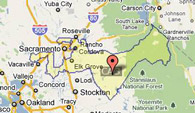 The California Redistricting Commission caused a bit of a stir earlier this week when it did not release its second draft of the legislative district maps it has been charged with drawing.
The California Redistricting Commission caused a bit of a stir earlier this week when it did not release its second draft of the legislative district maps it has been charged with drawing.
From the LA Times:
"The process is not transparent at all right now,'' said Tony Quinn, who was an advisor to Republicans in past redistricting efforts. "The public can't provide input if it doesn't see the maps."
An activist group called California Friends of the African American Caucus decried the commission's vote as its "latest shenanigans" and an "egregious decision to perform their public charge without public scrutiny." The group already was upset by proposed boundaries that would dilute the number of black districts, particularly in the Greater Los Angeles area.
The first maps also drew opposition from the Mexican American Legal Defense and Educational Fund. Its members complained that the first proposals did not increase the number of Latino-majority districts even though that ethnic group represents the bulk of population growth.
The commission was created as an antidote to the notion that creating legislative districts has traditionally functioned as a means of protecting partisan interests, by investing politicians with the ability to lump together different populations that may share no other commonality than voting tendencies helpful to incumbents and one political party or another.
So this process has been taken out of the hands of the political professionals and placed in those of some civic-minded folks who applied for the job, went through an extensive vetting process, and finally were chosen (eight of them, anyway) by lottery.
Last month, the commission released its first draft of the new maps, triggering an initial round of complaints by various constituencies who do not want their political power diluted.